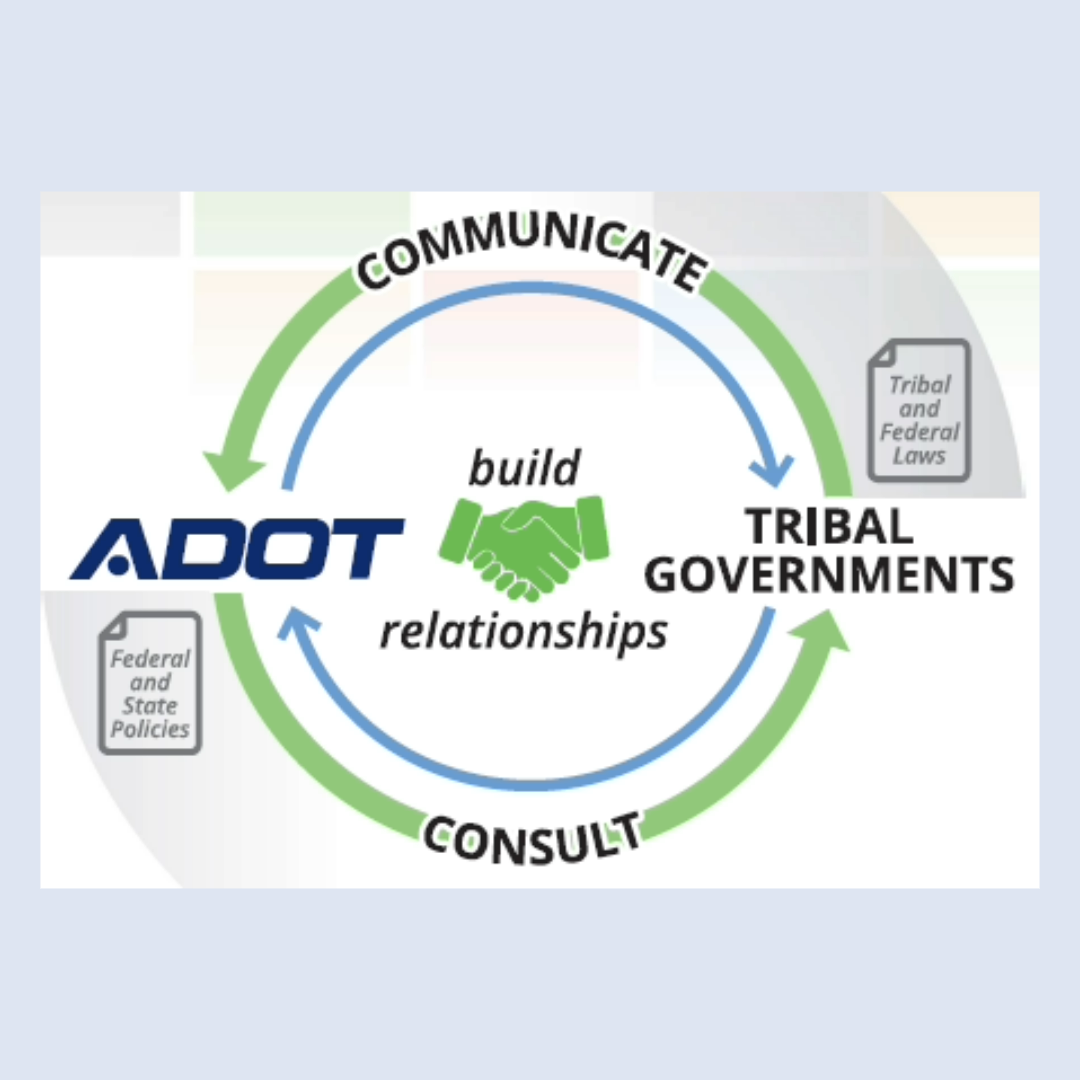ADOT’s tribal relations team collaborates with Native Nations in Arizona
ADOT’s tribal relations team collaborates with Native Nations in Arizona

In commemoration of Native American Heritage Month in November, ADOT’s Arizona Tribal Relations team shares how ADOT works with tribal nations in Arizona to provide safe and efficient transportation.
“ADOT recognizes the sovereignty of the federally recognized Native American tribes, Indian communities and Native Nations in Arizona — their current lands and their ancestral territories, and considers tribes as invaluable partners in keeping our roads safe,” said Native Nations Ambassador for Infrastructure Development Dezbah Hatathli.
Tribal lands encompass about 27 million acres, or 28% of the state land base. There are seven tribes located out-of-state with aboriginal and ancestral interests in Arizona.
“ADOT acknowledges tribal nations as fully fledged partners, not stakeholders, and is committed to working with Arizona’s tribal nations,” Hatathli said.
In supporting that commitment, two full-time employees joined the Environmental Planning and State Engineer’s Office within the past year to support ADOT’s tribal communication and consultation efforts.
Tribal relations team members are:
-
State Engineer's Office (SEO) Native Nations Ambassador for Infrastructure Development Dezbah Hatathli, who is a member of the Navajo Nation.
-
Multimodal Planning Division (MPD) Planning Program Manager Don Sneed, who is a member of the Gila River Indian Community.
-
MPD Planning Program Manager Paula Brown, who is a member of the Navajo Nation.
-
Infrastructure Delivery and Operations Division’s Right of Way Group Contract Right of Way Agent III Alicia Urquidez.
-
SEO's Environmental Planning Tribal Liaison Rebecca Clarke Robinaugh.
Together, they keep tribes informed, consulted and aware of ADOT planning and projects. Examples include quarterly partnership meetings with the Hopi Tribe and Navajo Nation, National Electric Vehicle Infrastructure tribal outreach, tribal broadband outreach regarding the Interstate 19, Interstate 17 and Interstate 40 corridors; and quarterly coordination meetings with the Gila River Indian Community and Salt River Pima-Maricopa Indian Community.
“Transportation funding for infrastructure and transportation-related projects, while advertised as broadly available at a national level, is a limited and very selective resource for tribes overall. The crash data and other analytical metrics also factor directly into highway funding and planning, yet many Arizona tribes have not actively submitted crash reports to ADOT,” Hatathli said.
The Gila River Indian Community was the first Arizona tribe to submit electronic crash reports to ADOT by using the connection other Traffic and Criminal Software (TraCS) agencies use.
More information about transportation and tribes is available at Arizona Tribal Transportation and Inter Tribal Council of Arizona.
